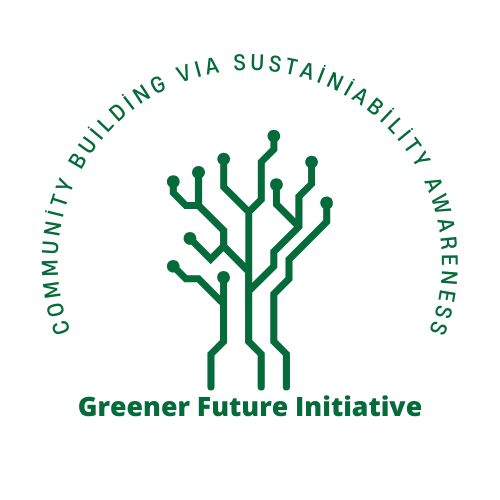Cities are growing rapidly, and with this growth comes challenges like pollution, congestion, and resource depletion. Urban sustainability is the key to solving these problems. It focuses on creating greener, smarter cities that support both people and the planet. But how can we achieve this? The answer lies in sustainable urban planning, energy-efficient infrastructure, and waste reduction strategies.
Urban areas consume vast amounts of energy and generate significant waste. They contribute heavily to greenhouse gas emissions, making climate action crucial. By rethinking how cities are built and operated, we can create urban environments that are both livable and eco-friendly. This article explores various strategies to make cities more sustainable and highlights real-world examples of green urban planning in action.
Sustainable Urban Planning
Sustainable urban planning focuses on designing cities that use resources efficiently. It integrates green spaces, public transportation, and smart growth strategies to reduce environmental impact.
Key Elements of Sustainable Urban Planning
- Compact City Design – Encourages mixed-use development to reduce urban sprawl and improve accessibility.
- Green Spaces – Parks, gardens, and green roofs improve air quality and provide recreational areas.
- Public Transport Expansion – Reducing car dependency cuts emissions and traffic congestion.
- Smart Infrastructure – IoT and AI-driven city planning enhance efficiency and reduce waste.
- Renewable Energy Integration – Solar, wind, and hydroelectric power reduce reliance on fossil fuels.
Example of Sustainable Urban Planning
Copenhagen, Denmark, is a leading example of urban sustainability. The city prioritizes biking, with more than 50% of residents commuting by bicycle. Public transport runs on renewable energy, and green spaces are abundant.
Green Buildings and Energy-Efficient Infrastructure
Buildings account for a large share of energy consumption and emissions. Green architecture and energy-efficient infrastructure are essential for sustainable cities.
Features of Green Buildings
- Energy Efficiency – Use of smart lighting, insulation, and passive solar design.
- Sustainable Materials – Recycled, non-toxic, and locally sourced materials reduce environmental impact.
- Water Conservation – Rainwater harvesting and low-flow fixtures minimize water waste.
- Renewable Energy Use – Solar panels, wind turbines, and geothermal heating reduce carbon footprints.
- Smart Building Systems – Sensors and automation optimize energy use.
Example of Green Architecture
The Bosco Verticale in Milan, Italy, features two residential towers covered in thousands of trees and plants. This design improves air quality, reduces energy costs, and provides urban biodiversity.
Reducing Urban Waste and Emissions
Waste management is a major challenge in cities. Proper waste reduction strategies can help minimize landfill use and pollution.
Strategies for Waste Reduction
- Recycling Programs – Encouraging residents to recycle reduces waste sent to landfills.
- Composting Initiatives – Organic waste can be composted to enrich soil instead of being discarded.
- Circular Economy – Repurposing and reusing materials extend product lifespans.
- Smart Waste Management – Sensors in bins optimize garbage collection routes, reducing emissions.
- Bans on Single-Use Plastics – Cities like San Francisco and Amsterdam have reduced plastic waste significantly.
Example of Smart Waste Management
Seoul, South Korea, implemented a smart waste system where residents pay based on the amount of waste they generate. This policy has significantly reduced waste and increased recycling rates.
The Role of Technology in Urban Sustainability
Technology plays a crucial role in making cities greener and smarter. Smart city solutions enhance efficiency and reduce resource consumption.
Smart City Innovations
- Energy-Efficient Streetlights – Adaptive LED lighting saves electricity and reduces light pollution.
- Traffic Management Systems – AI-powered systems reduce congestion and emissions.
- Green Roofs and Walls – Improve insulation and reduce heat island effects.
- Renewable-Powered Public Transport – Electric and hydrogen-powered buses lower emissions.
- Water Conservation Technologies – Smart meters track and reduce water waste.
Example of a Smart City
Singapore is one of the world’s smartest cities, using IoT technology to manage traffic, reduce waste, and optimize energy use. Its “Green Plan 2030” aims to plant more trees, expand solar power, and create car-free zones.
How Individuals Can Contribute to Urban Sustainability
Urban sustainability is not just the responsibility of governments and businesses. Individuals can also make a difference.
Ways to Live Sustainably in Cities
- Use Public Transport or Bike – Reduces car emissions and traffic congestion.
- Adopt a Zero-Waste Lifestyle – Reduce, reuse, and recycle to minimize waste.
- Support Local Businesses – Buying local reduces transportation-related emissions.
- Conserve Energy at Home – Switch to LED bulbs and unplug devices when not in use.
- Participate in Community Initiatives – Join urban gardening or clean-up programs.
The Future of Sustainable Cities
The future of cities lies in sustainability. With rapid urbanization, smart planning and green solutions are essential. Governments, businesses, and individuals must work together to build cleaner, greener cities.
Trends Shaping the Future of Sustainable Cities
- Net-Zero Buildings – Constructing buildings that generate as much energy as they consume.
- Car-Free Zones – Expanding pedestrian-friendly areas to reduce pollution.
- Vertical Farms – Growing food in urban areas to reduce food miles.
- Waste-to-Energy Projects – Converting waste into renewable energy sources.
- Climate-Resilient Infrastructure – Designing cities that can withstand extreme weather events.
Example of a Future-Focused City
Stockholm, Sweden, aims to become fossil fuel-free by 2040. It invests in renewable energy, public transportation, and green building projects.
Conclusion
Urban sustainability is crucial for the future of our planet. By embracing green buildings, smart infrastructure, and waste reduction, cities can become more livable and eco-friendly. Governments must implement sustainable policies, businesses must innovate, and individuals must make conscious choices. Together, we can build greener, smarter cities for future generations.

